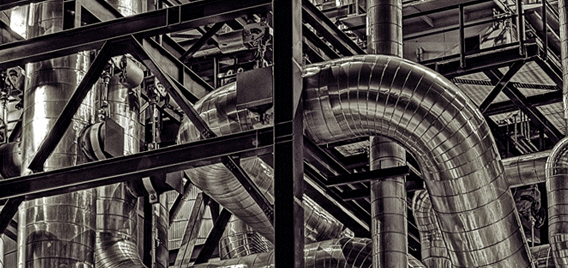Chemical and Process Engineering Resources

Questions and Answers
Question #1
Could you please give me in layman terms a better definition for K values. I know that K is defined as "the number of velocity heads lost"...But what exactly does that mean???
Mr. Leckner's reply to this question:
Well, I'll try to give you the Chemical Engineer's version of the layman answer. Velocity of any fluid increases through pipes, valves and fittings at the expense of pressure. This pressure loss is referred to as head loss. The greater the head loss, the higher the velocity of the fluid. So, saying a velocity head loss is just another way of saying we loose pressure due to and increase in velocity and this pressure loss is measured in terms of feet of head. Now, each component in the system contributes to the amount of pressure loss in different amounts depending upon what it is. Pipes contribute fL/D where L is the pipe length, D is the pipe diameter and f is the friction factor. A fitting or valve contributes K. Each fitting and valve has an associated K. |
Â
Question #2
It appears that the K values in CRANE TP-410 were established using a liquid (water) flow loop. Is this K value also valid for compressible media systems? (Can a K value be used for both compressible and incompressible service?)
Mr. Leckner's reply to this question:
Crane also tested their system on steam and air. Now, this is where things get sticky. As per CRANE TP-410, K values are a function of the size and type of valve or fitting only and is independent of fluid and Reynolds number. So yes, you can use it in ALL services, including two-phase flow. However, as I point out towards the end of my article, there is now evidence that shows using a single K value for the valve and fitting is not correct and that K is indeed a function of both Reynolds number and fitting/valve |
Â
Question #3
When answering my first question, you stated: 'Velocity of any fluid increases through pipes, valves and fittings at the expense of pressure.' When you say this, you are talking about compressible (gas) flow right? For example, in a pipe of constant area, the velocity of a gas would increase as the fluid traveled down the pipe (due to the decreasing pressure).  However, the velocity of a liquid would remain constant as it traveled down the same pipe (even with the decreasing pressure). Is this a correct statement?
Mr. Leckner's reply to this question:
Sorry for the confusion. Yes to both of your questions. If you look at the Bernoulli equation, you will see that velocity cancels out for a liquid as long as there is no change in pipe size along the way and pressure drop is only a function of frictional losses and a change in elevation. |
Â
Question #4
I'm reading the Crane Technical Paper #410 and I have the following
questions/comments:
Page 2-8 of TP 410 states that:
"Velocity in a pipe is obtained at the expense of static head". This makes sense and Equation 2-1 shows this relationship where the static head is converted to velocity head. However, there is no diameter associated with this. So is it correct to say based on equation 2-1 that if you had a barrel of water with a short length of pipe attached to the bottom that discharged to atmosphere, and in this barrel you had 5 feet of water (5' of static head), the resulting water velocity would be 17.94 ft/sec (regardless
of the pipe diameter).
Maybe the real question is how do you use equation 2-1. Do you have to know the velocity and then you can calculate the headloss? And why does equation 2-1 and equation 2-3 seem to show headloss equaling two different things?
Also, why does it say that a diameter is always associtated with the K value, when as I mentioned above there is no diameter associated with equation 2-1?
Maybe I'm trying to read into all of this too deeply, but I still do not feel that I fully grasp what page 2-8 is trying to reveal.
Mr. Leckner's reply to this question:
You need a diameter to get velocity. Velocity is lenght/time (for example, feet/sec). Flow is usually given in either mass units (weight/time or lb/hr for example) or in volumetric units (cubic feet per minute for example). To get velocity, you need to divide the volumetric flow by a cross sectional area (square feet). To get an area, you need a diameter. So the velocity is always based on some diameter. |

 FB
FB



3 Comments
yeal,thank you very much,i got a lot from this topic.
I'm a bit confused by the preferred equations to be used. The only equation that produces the 11.73 psi dP for the system described is Equation 2, yet Equations 6 & 7 seem to be preferred.